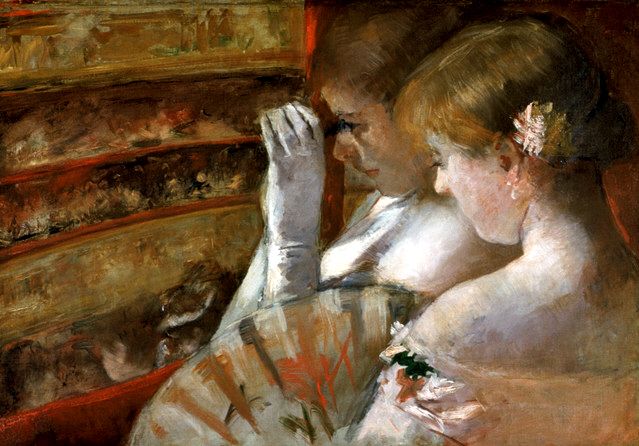The New Masters: The Best Modern Artists To Invest in With Your Money
Tangible assets are hot this year, and modern art is leading the way. Here are the best ones investors should look out for.

Investors often realize in their sojourn into the art world that the world of finance shares a fundamental philosophy. Both are competitive environments that are historically facilitated by middlemen and averse to disruption. While traditional finance has been more welcoming of modernity, the art world has, for better or for worse, been stuck in the past.
Technical innovations—like art as non-fungible tokens—are knocking at the door of every industry, but fine art seems to be the last holdout.
If there’s one artist whose inspired vision made their name synonymous with artistic greatness, it is Pablo Picasso.
While physical art still presides as a more certain alternative asset to invest in, only time will tell if cyber-materialism will prevail. Nevertheless, investors who are looking for substance may appreciate these famous modern artists.
Edgar Degas (1832-1917)
Despite his recognition as one of the fathers of the impressionist movement, French painter Edgar Degas preferred to be called a realist later in his career. It was not only the mix of praise and contempt for his work that made him controversial but also his avowed antisemitism which had steeped French society. Yet, this had little impact on his reputation nor the acclaim for his work, with prices for his paintings gradually going up in recent decades. Today, a Degas can fetch anywhere from five to eight figures, with the Danseuses series of sculptures and pastels easily selling for tens of millions of dollars.
Mary Cassatt (1844-1926)
The unusual upbringing of American artist Mary Cassat brought her from rural Pennsylvania through London, Berlin, and, eventually, Paris, the city to which she expatriated in 1870. Cassatt became close colleagues with Degas, taking after his impressionist style before shifting to Japanese-inspired printmaking in the following decades. While Cassatt may not fetch Degas prices, her feminist depictions of the New Woman as well as mothers and daughters are regularly sold for millions, with In The Box being her pinnacle work. While Cassatt’s price performance has been relatively lackluster in recent decades, this can be attributed to historical under-recognition and undervaluation of female artists.

In The Box
Source: Wikimedia
Vasily Kandinsky (1886-1944)
It’s hard to compete against the range and raw talent of Vasily Kandinsky. After seeing an Oscar-Claude Monet exhibit in his birth city of Moscow, Kandinsky abandoned a promising career in law and economics well into his thirties by rejecting a teaching position at the Munich Academy. Kandinsky became inspired by Monet’s impressionism and eventually settled in Munich to pursue art, where the gradual abstraction of his work culminated in him teaching at the Bauhaus school of art. Today, Kandinsky’s oil paintings produced during his Bauhaus period fetch tens of millions of dollars at major auction houses like Sotheby’s and Christie’s.
Frida Kahlo (1907–1954)
Probably one of the most influential female portraitists of the 20th century is Mexican artist Frida Kahlo. Kahlo’s work helped forge the pre-Columbian Mexican identity through her meticulous portraiture that was highlighted by floral adornments and an unkempt brow that challenged normative western beauty standards. Kahlo’s stunning self-portraits, as well as surrealist landscapes, topped a million dollars in recent years, but, in comparison, her work across other media has been radically cheaper at auction.
Pablo Picasso (1881-1973)
If there’s one artist whose inspired vision made their name synonymous with artistic greatness, it is Pablo Picasso. Picasso’s name lives in infamy, not just in the world of art where he pioneered foundational styles like cubism, futurism, dadaism, but also as the cultural definition of creativity, from rap music to Hollywood films. Needless to say, Picasso is one of the most sought-after artists in the world and his work is arguably the best modern art investment of the 21st century, with floor prices usually dangling above one million dollars and sale prices for his best works breaching seven figures.
Jackson Pollock (1912-1956)
One of the most unique American artists is the abstract expressionist Jackson Pollock. After his untimely demise, Pollock gained posthumous recognition by the Museum of Modern Art in New York City for his distinct drip technique which involved splattering colors in a frenzy of gesticulations. Pollock was a prolific painter under the patronage of Peggy Guggenheim, but he produced few works in his later life, working mostly on sculptures in the year leading up to his death. Over the past decade, Pollock has been one of the best steadily appreciating blue-chip artists to invest in, but while his paintings can either hit or miss on the secondary market, they still range from the low thousands to the tens of millions of dollars.
Andy Warhol (1928-1987)
The American pop-cultural aesthetic wouldn’t have been refined if it wasn’t for Andy Warhol. From the array of Campbell soup cans to the colorful portraits of mononymous figures of the 1950s like Elvis, Marilyn, and Mao, Warhol’s work exploring celebrity and consumerism defined—and perhaps even created—the folk heritage known as Americana. A prolific pop artist, Warhol also ventured into film and magazine writing with work that explored the true New York characterized by its various subcultures. While Warhol’s screen prints and ink drawings are accessible to most investors, the real value lies in his colorful silkscreen portraits featuring grid and collage patterns normally auctioned for tens of millions of dollars.

Source: TheArtist.com
Mary Beth Edelson (1933-2021)
Last year, we lost one of the boldest feminist artists of the silent generation: Mary Beth Edelson. Edelson’s work was uninhibited by the taboo of sex or the shame of nudity, but rather embraced those things in her critiques of patriarchal society. From depicting goddesses and idols of pagan pantheons to appropriating Da Vinci’s The Last Supper by replacing Christ and his apostles (minus Judas) with her own feminine icons, like Georgia O’Keeffe, Edelson’s work heavily features religion. Like many female artists, Edelson’s work suffers from the unfortunate trend of gifted female artists being underappreciated in juxtaposition to their male counterparts.
Jean-Michel Basquiat (1960–1988)
One of the most inspired yet tragic artists of recent times is American neo-expressionist Jean-Michel Basquiat. Born and raised in Brooklyn, Basquiat was raised by his mother to love art, but it was his fondness for cartoons and comic books that fueled his artistic energy. After his mother was admitted to a psychiatric institution, Basquiat began doing drugs and ran away from his father’s home to begin his pilgrimage toward the graffiti scene of lower Manhattan in the late 1970s. His work was cubist and Picasso-esque, with heads and figures portrayed with a tinge of darkness that perhaps expressed a feeling of despair.
His work quickly gained momentum as he became recognized by art critics, sold his paintings, and received invitations to galleries in the early 1980s. Within a few years, Basquiat grew exponentially as his paintings became some of the most sought-after contemporary works of any young artist. Though a fatal heroin overdose cut his career short at 27, his legacy endures as the Picasso of the streets, whose works are some of the fastest appreciating and highly valued of any contemporary artist to date.
How to invest in modern art
Look, I get it, it’s hard to afford blue-chip art, especially with the prices we are seeing these days. However, hard doesn’t mean impossible. Just like investing in stocks, securitized art is a new way that practically anyone can invest in a Picasso, Basquiat, or whatever work is deemed investment-worthy by the experts over at Masterworks. It’s an art investing platform where every painting starts at $20. Masterworks’ operates a secondary market that provides an unprecedented level of liquidity by allowing art investors to buy and sell shares of their paintings whenever they want. Art investing has never been more accessible or convenient than with Masterworks.

